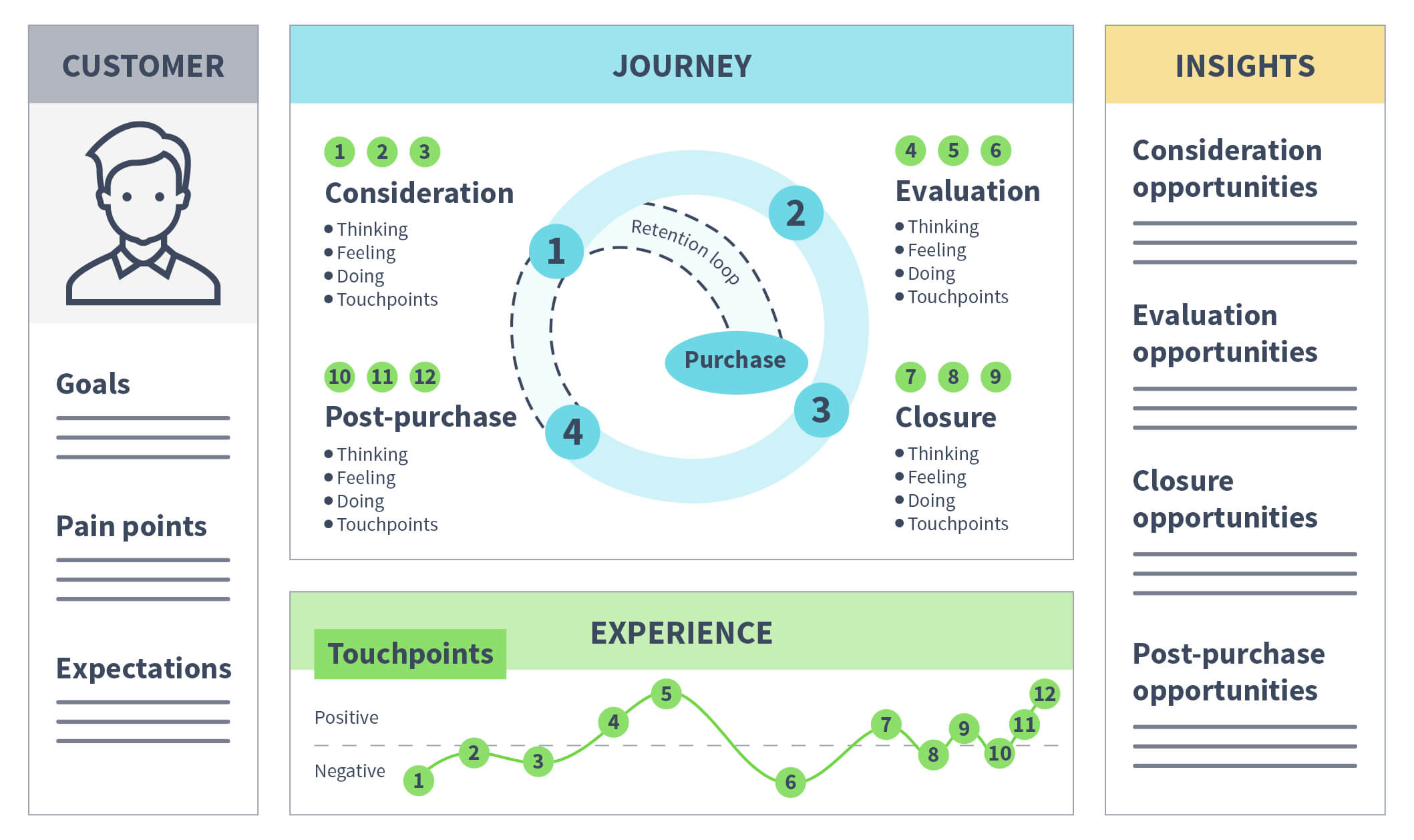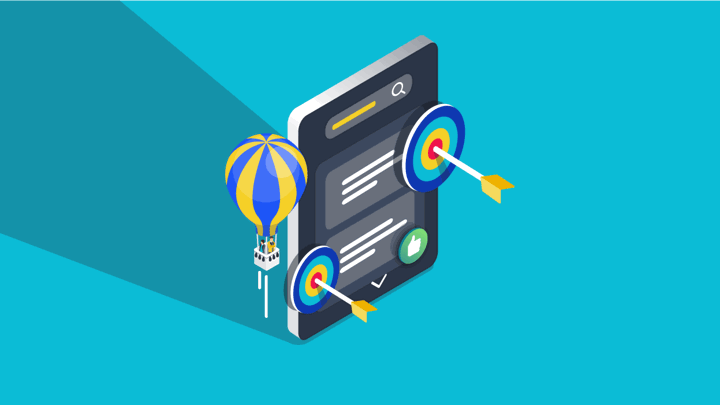A recent report by Siteimprove and IDG found that 64% of businesses say creating well targeted, relevant content is their biggest optimization challenge.

While businesses are struggling to create the right content and deliver it at the right time, consumers are calling for better personalization efforts.
According to Segment’s Personalization Report, “On average 71% of consumers express some level of frustration when their shopping experience is impersonal. 44% of consumers say that they will likely become repeat buyers after a personalized shopping experience with a particular company.”
Other studies resulted in similar findings: according to Accenture, 43% of customers are more likely to convert when brands make an effort to personalize experiences. However, at the same time, only 32% of marketers believe they are currently getting personalization right.

There’s clearly a tense pain point here: customers will be more engaged and purchase more from businesses that provide relevant, targeted content; however, marketers struggle to deliver exactly that. Below, we’ll cover ways you can create personalized content for every stage in the customer journey, so you can deliver the right content at the right time.
1. Understand what relevant content actually looks like
When it comes to creating relevant content for your users and customers, the first step is probably quite obvious: figure out what’s relevant to them.
To achieve this, whoever creates the content strategy and writes the content needs to have regular, open dialogue with your audience. In short, you need a customer listening program.
If your content team is now tasked with customer listening, it’s best to limit the scope of what that should look like—otherwise, customer meetings can easily suck up a lot of time. To start a streamlined customer listening program, use these four steps:
- Sit regularly with the CX team
Your content team should sit with the CX or CS team on a regular basis (try once a month to start). Have them listen in on customer calls—specifically looking for customer questions that marketing can solve higher up in the funnel with well targeted content.
See which topics come up repeatedly and which formats customers are interested in (videos, how-to articles, etc.). This will give content teams a good overview of what common customer pain points are, as well as what to concentrate more on in customer focus groups.
- Create representative customer focus groups
If your company has clearly defined personas or ideal customer types, use those to create customer groups that reflect those personas. Meet with these focus groups about once a quarter to get feedback on company messaging, content, campaigns, and ideas. Your content team should drill into some of the focus areas and pain points they learned about in their CS calls.
- Aggregate customer feedback
You likely have several different customer feedback platforms: NPS scores/comments, review sites, support tickets, etc. Aggregate that data in order to look at trends in topics, problems, and FAQs. Once you identify themes, drill down into individual responses for more information and follow-up for feedback.
- Focus on being useful
Marketing teams often fall prey to pushing their product and brand above all else. But customers are after something entirely different: value. They want help with their problem, an answer to their question, or actionable advice. The goal of your customer listening program should be to provide your audience value, not pushing your products.
Throughout your customer listening activities, your team will learn a lot about how your customers became familiar with your brand, why they chose to buy from your brand (or consider your products), and what keeps them engaged or disengaged. All of that knowledge can be structured into a customer journey map, which will help your content team assess at which stages each piece of content is appropriate.
2. Create your customer journey map and add in content
When you take a look at your customers’ journeys, you’re essentially mapping out the flow each persona or customer group takes when making a purchase or becoming a customer. When you do that, you can see the pain points, obstacles, and smooth areas of a customer’s journey and address them as necessary.
You and your content team are probably both familiar with the traditional customer funnel or creating top, middle, and bottom funnel content, which usually looks like this:
But the traditional marketing funnel is very static, and not nearly as flexible as the actual process of buying a product.
As McKinsey and others have pointed out, the decision making process is actually more circular than linear, with each stage “representing potential battlegrounds where marketers can win or lose.”
For the purposes of mapping out relevant content to the customer journey, it’s more helpful to consider the four major stages of the circular customer journey: consideration, evaluation, closure, and post purchase. Of course, you might find that your own customers go through fewer or more stages.

- Consideration
The consideration phase is kick-started by an initial trigger, where consumers explore their problem or inspiration. During this phase, consumers compare and consider a set of brands, based on the reputation of those brands, initial exposure to that set of brands, ads, recommendations, etc. This is the starting knowledge a consumer begins their journey with.
- Evaluation
In the evaluation stage, consumers continue their research on a deeper level. They’re adding and removing brands from their list, comparing products, gathering information, reading reviews, consulting sources they trust, and looking at pricing information.
- Closure
The closure phase is defined by the moment of purchase. The customer has done their research, has likely talked to sales or consulted a trusted source and is now ready to make a decision.
- Post-purchase
The post purchase phase is everything that comes after the initial purchase, but before a second purchase or churn. In this stage, the customer is at their most critical or impressionable. They’re looking for the brand to deliver on the promise that was made about the product or service.
For each of these stages, use the learnings from your customer listening program to assess what your customers are thinking, feeling, doing, and the touchpoints they experience. Map out the touchpoints on a scale of negative to positive feelings.
This will help you identify areas where you can use content to solve problems, answer questions, provide inspiration, or put customers at ease. In essence, this helps you identify the gaps you have in relevant content, while also providing you a timeline for when it should be presented to a customer on their journey.
3. Understand what your audience wants from each content piece
Once you have a list of content opportunities for each stage in your customer journey, you need to identify what exactly your audience wants out of each piece.
- What will your audience find useful?
To truly provide value to your audience, you need to understand what they will find useful at this stage. Forget pushing your latest campaign or a specific offer. Focus on providing true value. Answer the questions and pain points you uncovered in the content opportunities in your customer journey mapping process.
Once you have a working title and outline for your content, circulate it in your customer focus groups to see if it answers the questions or pain points customers have at that stage.
Create useful content by being very thorough. Provide actionable, concrete steps that lead your audience directly to the answers they’re looking for. Your audience shouldn’t have to look elsewhere for more information after reading or watching your content.
- Which formats are best suited to their questions and touchpoints?
Once you’ve identified what your audience will find useful, you need to figure out which formats to consider and how that fits with the touchpoints they experience at that particular stage in their journey.
For example, if you sell B2B software, you might find that customers in the post-purchase stage struggle to fully onboard their entire team to the tool. To address that, your content team might create an implementation package, which includes FAQs, thought leadership content on strategy, etc. Given those touchpoints and the value you’re trying to provide, you should consider video tutorials for your product, checklists to run through with a team new to your tool, downloadable templates for best-practices, etc. All of that can be sent with a personalized email that includes a video introduction that’s tailored to the unique stage in the journey your target audience is at.
For each piece of content, consider where in the journey your audience is at and how you can tailor format and touchpoints to address their needs.
- What can you give them next?
We’ll get into this more below, but as you create more relevant and well-timed content, you can start to collect data on which pieces of content have higher rates of success at each stage in the customer journey. Based on those success rates and the feedback your focus groups give you, your team can start to better predict the types of content your audience would like to see next.
Surprise and delight your audience by answering their questions and addressing their needs before they become serious roadblocks on their journey.
4. Build psychographic profiles
Now that you’ve learned which types of content your audience wants to see and when, you can start to personalize it. To create the most relevant, personalized content, you need to build psychographic profiles of your customer segments.
An example of a company doing that well is Subaru. Their CMO has said:
“A lot of (car) manufacturers target customers based on pure demographics. We try to go beyond that and find people who are likeminded who have the same interests or needs, the same passions Subaru has, to really find commonalities. That transcends demographics, it's really more psychographics.
- What are psychographics?
In short, psychographics is studying customers based on psychological characteristics, such as attitudes, values, desires, and motivations.
Traditionally, marketing teams have used demographics as a way to segment their audience. While demographics can generally explain some preferences and behaviors, they don’t give marketing teams deep insights into their audience’s motivations—that’s where psychographics come in.
If demographics is who your audience is, then psychographics is why your audience does what they do.
- How to collect psychographic data
Start collecting psychographic data in easy-to-execute ways, so your team has data to get started with. There are a few simple ways to start collecting psychographic data:
- Collect this data in your customer focus groups
- Follow up with the customers your team meets when they sit with the CS team and interview customers 1-1
- Send out customer surveys
- Interview your sales team and product matter experts about what customers really care about within the product and buying cycle
When interviewing or surveying customers, ask questions that get to the heart of what they care about, such as:
- What motivates you on a personal level?
- What motivates you at work?
- What are your greatest passions in life?
- Which hobbies do you enjoy?
- How would you describe your personality?
- Which values are most important to you?
- Which values do you look for in a company you might buy from?
- How would you describe your lifestyle?
5. Bring together content, psychographics, and customer journey stages
Whew! Now it’s time to bring everything together in order to personalize your content based on users’ psychographic profiles and target them at the correct stage in their customer journey.
- But first, what should personalized content look like?
According to the 2019 Trends in Personalization Survey Report, marketers overwhelmingly agree (98%) that personalization helps advance customer relationships, with 70% claiming it has a “strong” or “extremely strong” impact. The majority of marketers (85%) also think their prospects or customers expect a personalized experience.

It’s clear that marketers believe in personalization. And, as we discussed earlier, consumers also want personalized experiences, 43% of customers are more likely to convert when brands make an effort to personalize experiences. But, as Content Marketing Institute puts it:
“There’s a fine line between ‘Hello Brian’ and ‘We’re watching you, Brian.’”
Personalization doesn’t have to mean flexing all the data you have on an individual customer—it can simply be understanding where an individual is at on their journey and how you can best provide value in a tailored and relevant way.
- Mapping personalized content to the correct segments
Now it’s time for the final step, creating a content flywheel for each psychographic profile. Personalize the content opportunities you identified earlier on in the process with the interests and motivations of each psychographic profile and target them with their tailored content.
Writing for Harvard Business Review, Alexandra Samuel explains, “thoughtful use of psychographics will help you develop not only the messages and campaigns but also the products and services that specific customers want and need.”
More concretely, here are a few ways you can use this approach to deliver the right content at the right time to customers:
- Advertising. Identify which social media or media platforms your customer segments hang out on. Then, tailor the messaging for your paid posts to each segment and their stage in the customer journey and use detailed targeting options (including hobbies and interests) to get in front of potential customers.
- Email. Now that you have 1) a better understanding of each customer segment’s pain points and 2) more information on relevant angles and interests, you can not only write more relevant subject lines and personalized emails, but you can also send longer-form content that customers and prospects are actually interested in.
- Keyword targeting. Alexandra Samuel explains that “using psychographics allows you to do smarter keyword targeting—for example, targeting one message about your programming game to parents who are searching for ‘kids programming’ and another message to parents who are searching for ‘kids video games fun.’”
Learn more
It’s clear that customers will be more engaged and purchase more from businesses that provide relevant, targeted content; however, marketers are struggling to deliver exactly that.
If you’re one of the 64% of businesses that struggle to create targeted, relevant content, see how Siteimprove can help your team.


